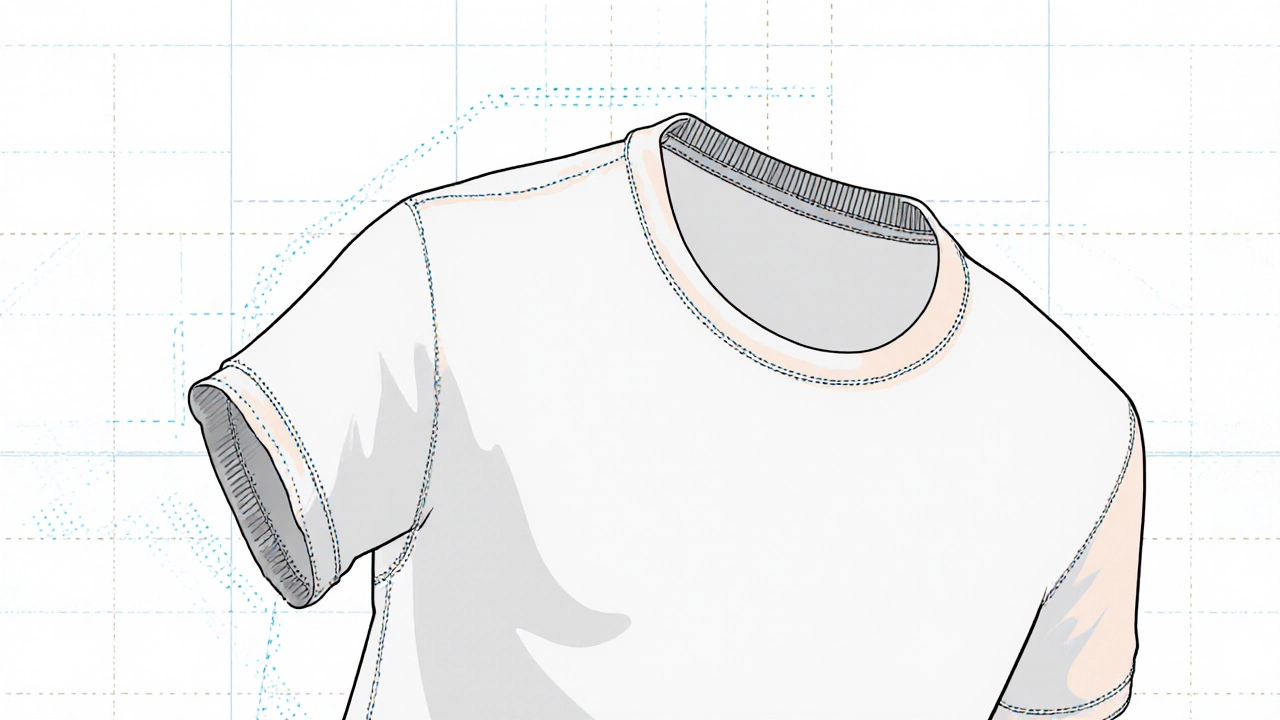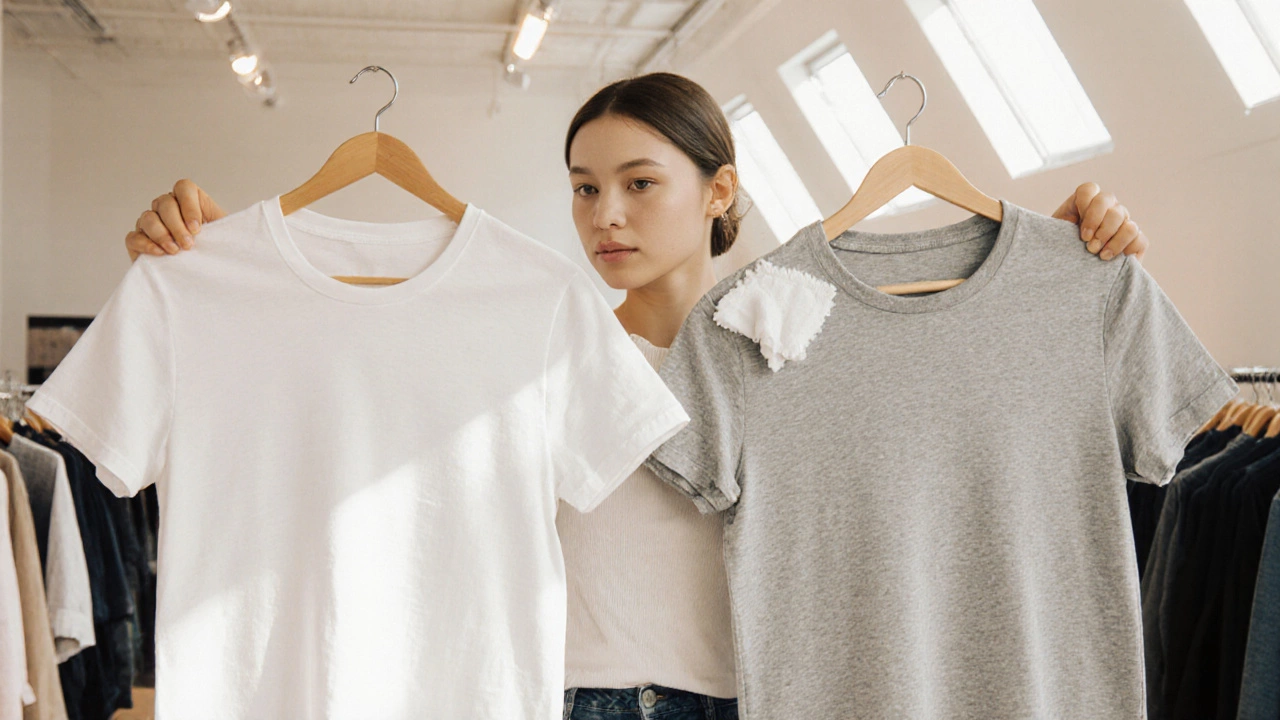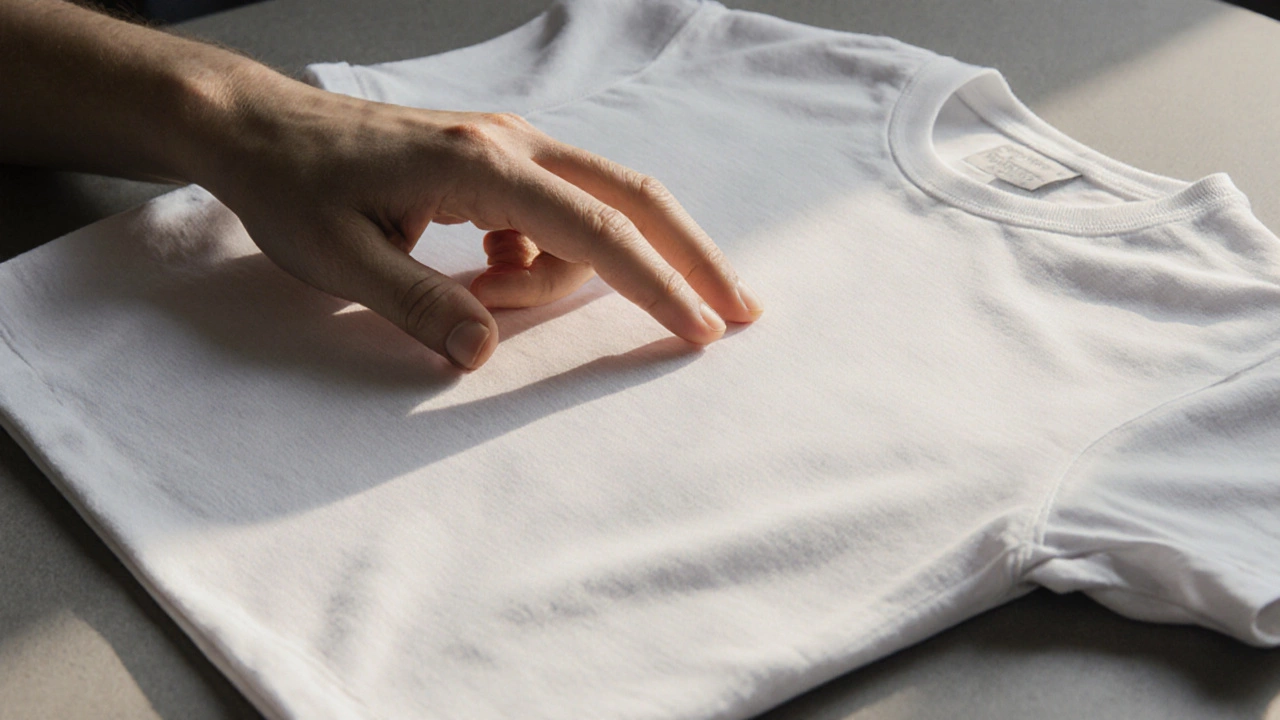T-Shirt Quality Score Calculator
Quality Assessment
Quality Results
Quality Assessment
After entering your details, the tool will display your t-shirt's quality score.
Ever bought a tee that felt cheap after a few washes and wondered what went wrong? You’re not alone. The good news is that spotting a quality t-shirt isn’t rocket science - it just takes a quick look at a few tell‑tale details.
Quick Takeaways
- Check fabric type: 100% combed ring‑spun cotton or a fine modal blend wins most tests.
- Feel the weight: 5‑7oz (150‑200g/m²) gives durability without stiffness.
- Inspect stitching: Double‑needle seams and tight hems last longer.
- Assess fit: Seam placement and stretch recovery matter more than size label.
- Watch color: Mid‑batch dyeing and pre‑shrink treatments keep colors true.
What Makes a T‑Shirt "Quality"?
Quality T‑Shirt is a garment that combines durable fabric, precise construction, comfortable fit, and long‑lasting colour. When these elements line up, the tee feels soft, drapes well, and survives repeated laundering.
Below we break down each element so you can evaluate any shirt on the rack in under a minute.
Fabric Type: The Foundation of Comfort
Cotton is a natural fiber known for breathability, softness, and hypoallergenic properties. Premium tees use combed ring‑spun or long‑staple cotton (e.g., Pima, Supima), which yields a smoother yarn and less pilling.
Polyester is a synthetic that offers moisture‑wicking and quick‑dry features. It’s cheap, but lower‑grade polyester can feel plasticky and trap odors.
Blends like 95% cotton/5% polyester combine the best of both worlds - the softness of cotton with the shape‑retention of polyester.
Fabric Weight and Hand feel
Weight is measured in ounces per square yard (oz) or grams per square meter (g/m²). A mid‑weight tee (5‑7oz / 150‑200g/m²) feels substantial without being stiff. Light‑weight shirts (<4oz) can be breezy but may become see‑through, while heavy‑weight (>8oz) can feel restrictive.
Run your fingers over the fabric. A high‑quality tee should feel smooth, with a slight stretch that snaps back quickly.

Stitching & Construction Details
Seam quality is a silent indicator of durability. Look for double‑needle stitching on the side seams and hem - it adds extra thread rows that resist unraveling.
Check the neckline and armhole edges. A reinforced rib (often a blend of cotton and elastane) keeps the shape from stretching out.
Inspect the cut‑and‑sew finish. Loose threads, uneven seams, or frayed edges are red flags.
Fit: Beyond the Size Tag
Fit refers to how the shirt contours the body, balancing comfort and style. Quality tees follow a consistent grading system, so a sizeM from BrandX matches a sizeM from BrandY.
Try the shirt on (or hold it up). The shoulders should align with your natural shoulder line, and the side seams should sit straight without pulling.
For a relaxed look, look for a “drop‑shoulder” style; for a slimmer silhouette, a “fitted” cut with a slight taper works best.
Colour Fastness & Dye Quality
Mid‑batch dyeing (where fabric is dyed in larger rolls) produces more even colour than piece‑by‑piece dyeing. High‑end brands often pre‑shrink the fabric, reducing shrinkage after wash.
Run a quick test: rub a damp white cloth on a hidden seam. If the colour leaches onto the cloth, the dye isn’t set well.
Brand Reputation & Price Signals
Brand Reputation is the track record of a company’s product quality, customer service, and ethical sourcing. While a higher price can hint at better materials, it’s not a guarantee.
Research the brand’s manufacturing standards. Companies that publish their fabric specs, mill certifications, or sustainability reports tend to be more transparent.
Side‑by‑Side Fabric Comparison
| Attribute | Cotton (Ring‑Spun) | Polyester | Cotton/Poly Blend (95/5) |
|---|---|---|---|
| Softness | Very soft, natural feel | Smooth but slightly synthetic | Soft with subtle sheen |
| Breathability | High | Medium | High |
| Moisture Wicking | Good | Excellent | Very good |
| Durability (pilling) | Moderate‑high (depends on yarn) | High | High |
| Price Range (USD) | $12‑$30 | $8‑$20 | $10‑$25 |

Quick Checklist Before You Buy
- Read the label: look for 100% combed ring‑spun cotton or a specified blend.
- Feel the weight: 5‑7oz is ideal for most climates.
- Inspect seams: double‑needle stitching on sides and hem.
- Check the neckline: reinforced rib and no loose threads.
- Test colour fastness with a damp cloth.
- Try the fit on or hold it up; shoulders should line up.
- Research the brand’s material disclosures.
Common Pitfalls and How to Avoid Them
Cheap “pre‑shrunken” tees often hide low‑grade cotton that will pill after a few washes. Avoid by looking for the word “combed” rather than just “cotton”.
Oversized, low‑cost tees may use thin single‑needle seams that split at the armpits. Double‑needle seams are a simple visual cue.
Very bright, neon colours can indicate heavy use of chemical dyes that fade quickly. Opt for muted or classic shades unless you need the bright look for a specific purpose.
Maintaining Your Quality T‑Shirt
Turn the shirt inside out before washing, use cold water, and choose a gentle cycle. Hang‑dry or tumble‑dry low to prevent shrinkage.
Skip the fabric softener; it can coat the fibers and reduce breathability. If you need extra softness, use a dryer ball.
When to Splurge vs. When to Save
If you need a work‑wear tee that looks polished and lasts a year or more, invest in a higher‑priced brand that lists detailed specs. For a one‑off concert shirt, a budget‑friendly option that meets basic criteria (cotton, decent stitching) will do.
Frequently Asked Questions
What is the best fabric for a summer t‑shirt?
A lightweight, 100% combed ring‑spun cotton (around 5oz) offers breathability while staying soft. If you sweat a lot, a cotton‑poly blend with moisture‑wicking properties works well.
How can I tell if a tee will shrink after washing?
Check the label for “pre‑shrunken” or “pre‑washed”. Also, a higher cotton content (especially non‑combed) tends to shrink more. Hand‑testing a small seam with water can give a hint.
Do double‑needle seams really matter?
Yes. Double‑needle stitching adds two rows of thread, which resists splitting and holds up better at high‑stress points like the underarms and side seams.
Is a tighter fit better for durability?
Not necessarily. A well‑cut tee with proper seam placement will last regardless of fit. Too tight can strain the fabric, while too loose may cause sagging and extra wear.
How often should I replace my favorite tee?
If you wash it by the rules above and it still feels soft, it can last 2‑3years. Replace when you notice pilling, loss of shape, or colour fading.
